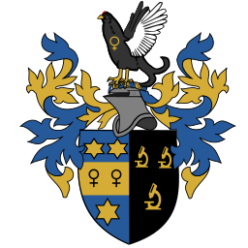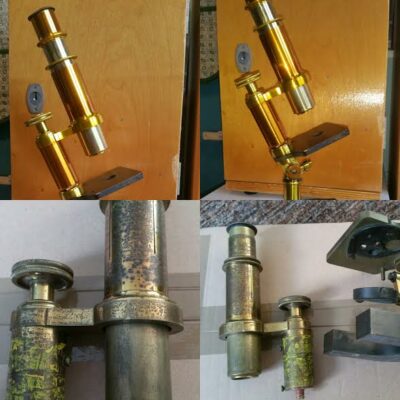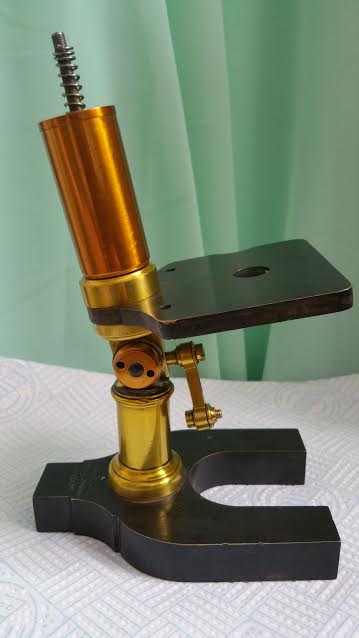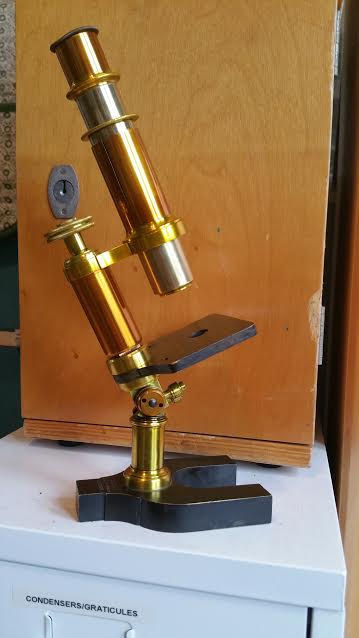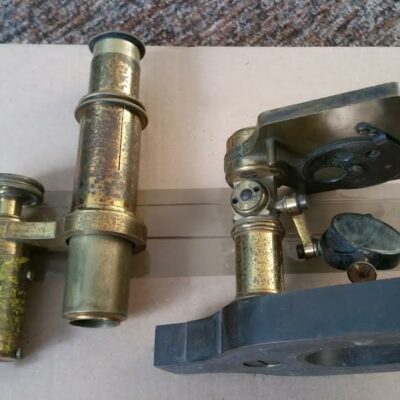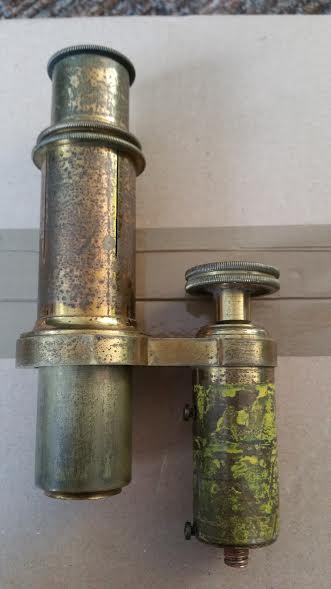A small two tone Baker microscope appeared on eBay some years ago and I was quite taken with its beauty so when I happened across a very badly damaged Baker in need of re-lacquering I decided to recreate the two tone look.
This little chap has been something of an experimental piece as I have tested various brown and orange lacquers out on it. I am finally happy with it. I just have two small pieces drying and I can reassemble it properly. The slideshow below shows the microscope before and after restoration.
